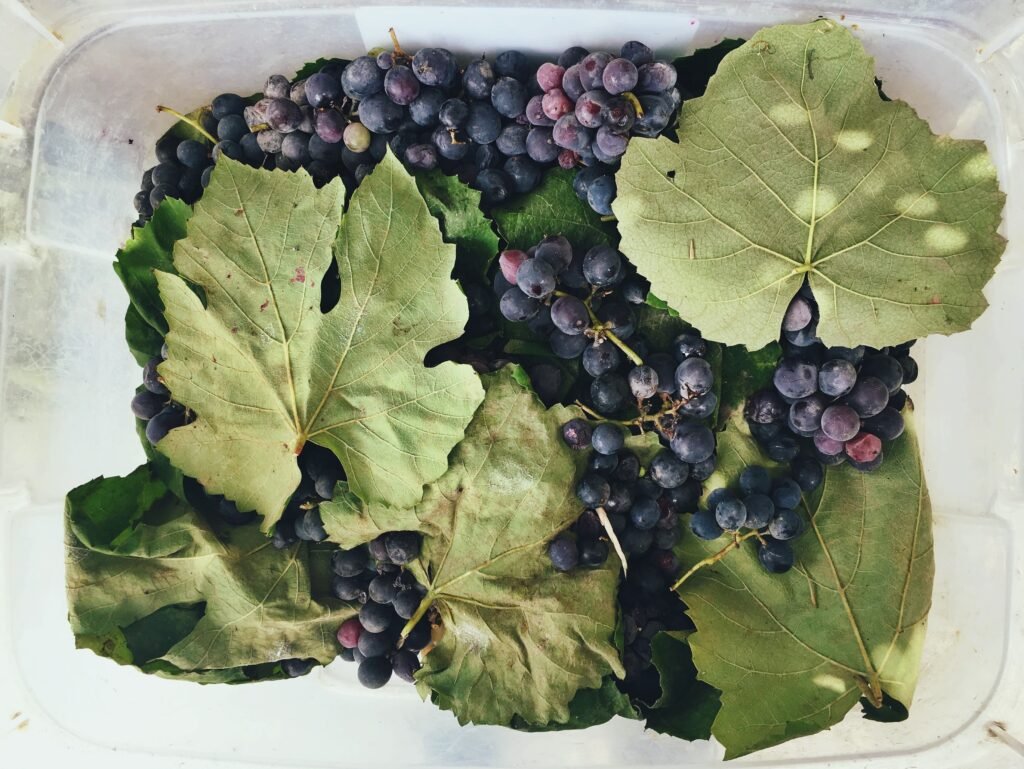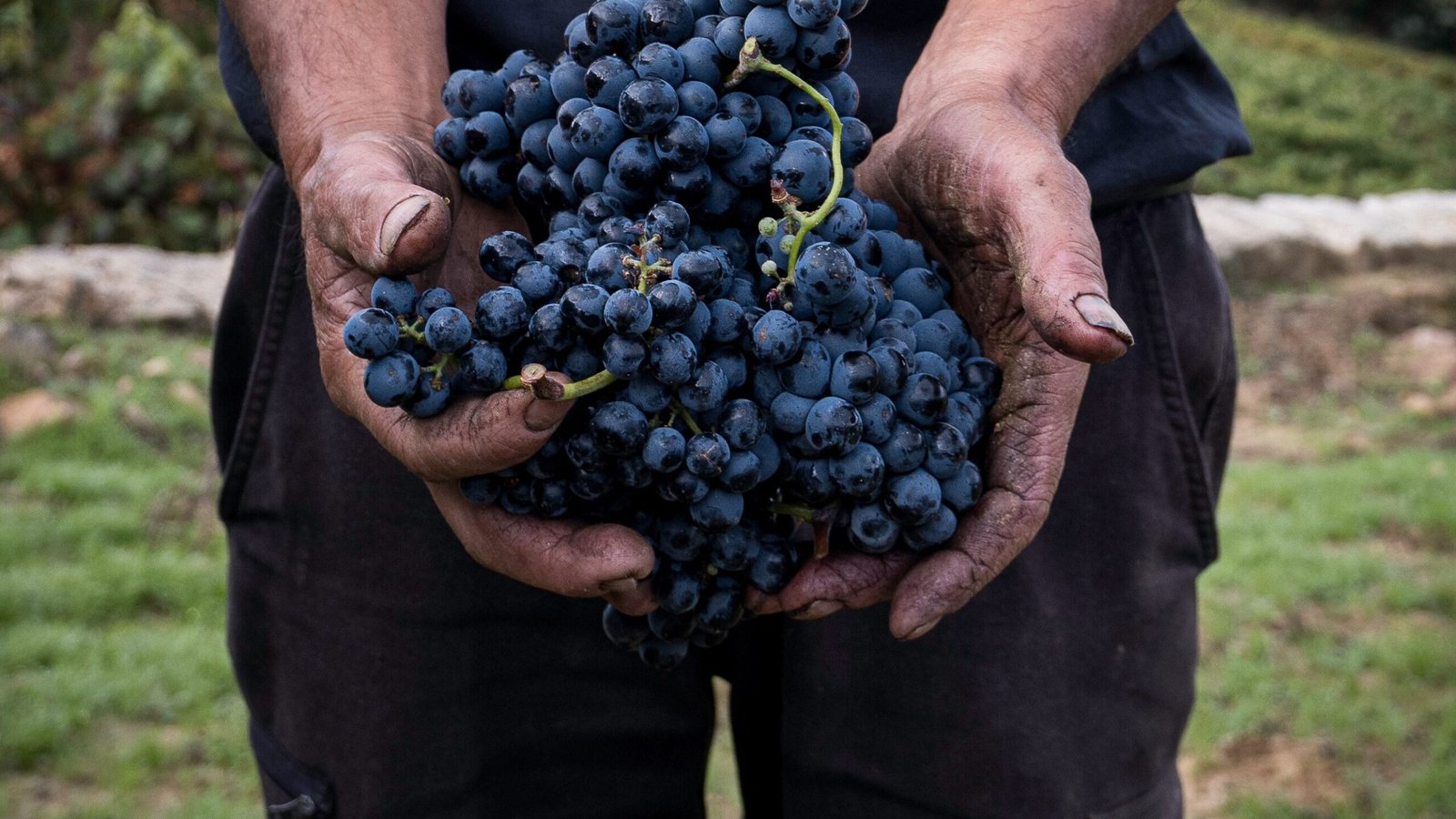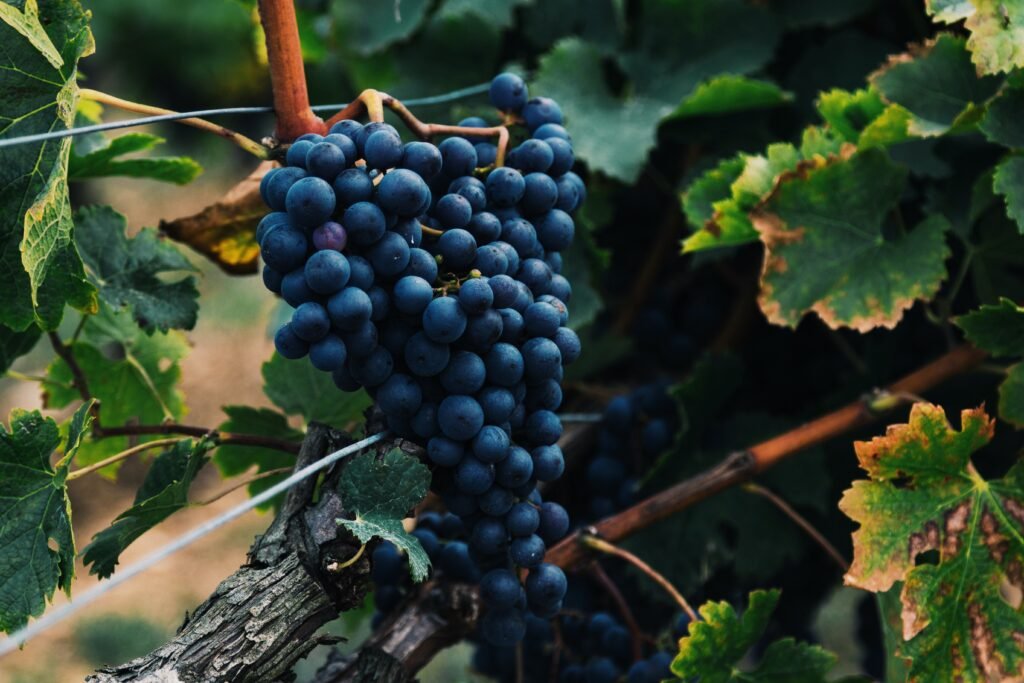Welcome, nature enthusiasts and curious wanderers! Are you ready to embark on an exciting journey into the depths of wilderness, where hidden delights await? Today, we invite you to join us as we unveil the mysterious world of Possum Grape – a captivating fruit that boasts both wonder and enchantment.
Get ready to immerse yourself in a comprehensive guide filled with intriguing folklore, mouthwatering recipes, medicinal wonders, and alluring secrets waiting to be discovered. So grab your adventurous spirit and let’s dive headfirst into the hidden treasures of Possum Grapes – prepare for a wild ride like no other!
Introduction to Possum Grape
Possum grape, also known as Vitis aestivalis or summer grape, is a native North American fruit that often goes unnoticed. It belongs to the grape family and can be found in various parts of the eastern United States, particularly in Texas, Oklahoma, and Arkansas.

Despite its name, possum grapes are not actually grapes but rather small purple-black berries that grow on woody vines. These vines can reach up to 30 feet in length and are often seen climbing trees or other structures for support. The leaves of the Vitis aestivalis vine are lobed and heart-shaped with a glossy green color.
| Variety | Characteristics | Flavor Profile |
| Vitis vulpina | Native variety found in the southeastern United States | Tart and tangy with hints of citrus |
| Vitis labrusca ‘Concord’ | Cultivated variety known for its large size and robust taste | Sweet and musky |
| Vitis rotundifolia ‘Noble’ | Popular hybrid variety with high sugar content and smaller seeds | Juicy and sweet with a slightly spicy aftertaste |
History and Origins of Possum Grape
The history and origins of Possum Grape can be traced back to the Native American tribes who first inhabited the land where this fruit grows. These indigenous communities were known to cultivate and utilize a wide variety of fruits, vegetables, and herbs for both culinary and medicinal purposes.

Possum Grape, also known as Vitis aestivalis or summer grape, is a species of wild grape native to eastern North America. It is believed that its name “Possum Grape” originated from the fact that opossums are fond of eating these grapes when they are in season.
The fruit was highly valued by Native Americans for its unique flavor profile and abundance of nutrients. They used it in various dishes such as stews, jams, and even fermented it into wine. The leaves and roots were also utilized for their medicinal properties – treating ailments such as fever, diarrhea, and skin irritations.
As European settlers began colonizing North America in the 17th century, they also took notice of this delicious fruit growing abundantly in the wild. They started cultivating it on their farms alongside other more popular varieties of grapes such as Concord and Niagara.
However, with the rise of commercial agriculture in the 19th century, many traditional varieties of grapes including Possum Grape were pushed aside in favor of more commercially profitable crops. This led to a decline in cultivation and consumption of Vitis aestivalis.
Health Benefits of Possum Grape
This fruit has been used for centuries by Native Americans for its medicinal properties and has gained popularity in recent years due to its numerous health benefits. In this section, we will delve into the various ways Vitis aestivalis can benefit your health.

1. Rich in Antioxidants
Possum grapes are packed with antioxidants such as resveratrol and flavonoids, which help protect our cells from damage caused by free radicals. These compounds have been linked to reducing the risk of chronic diseases like cancer, heart disease, and diabetes.
2. Boosts Immunity
The high levels of vitamin C present in possum grapes make it an excellent immune-boosting fruit. Vitamin C helps strengthen our immune system by promoting the production of white blood cells that fight off infections and diseases.
3. Improves Heart Health
Regular consumption of Vitis aestivalis may improve heart health due to their high content of polyphenols – plant-based compounds that have been shown to reduce the risk of cardiovascular diseases. Studies have also found that these berries can help lower blood pressure and cholesterol levels, further reducing the risk of heart-related issues.
4. Anti-inflammatory Properties:
Inflammation is a natural response by our bodies to fight off infections or injuries; however, chronic inflammation can lead to various health problems like arthritis and inflammatory bowel disease. Possum grapes contain anti
Culinary Uses and Recipes with Possum Grape
Possum grape, also known as frost grape or fox grape, may not be a popular fruit in the culinary world, but it is definitely worth exploring. This versatile fruit can be used in various dishes and its unique flavor profile adds a delightful twist to any recipe. Here are some of the culinary uses of possum grape that you should know about:

- Jams and Preserves: Possum grapes are commonly used to make jams, jellies, and preserves due to their high pectin content. Their tart-sweet flavor makes them an ideal ingredient for spreads and they pair well with other fruits like apples and peaches.
- Pies and Tarts: Another classic way to use possum grapes in the kitchen is by incorporating them into pies or tarts. The tangy taste of these grapes balances out the sweetness of the pastry crust, creating a delicious dessert.
- Syrups and Sauces: The juice extracted from possum grapes makes a great base for syrups or sauces that can be used to drizzle over pancakes, waffles, or ice cream. You can also mix it with honey or maple syrup for added sweetness.
- Juices and Smoothies: Possum grape juice is not only refreshing but also packed with nutrients such as antioxidants, vitamins C and K, and minerals like potassium and manganese. Its bright purple color makes it an eye-catching addition to smoothies or mocktails.
Foraging and Harvesting Tips for Possum Grape
Foraging and harvesting possum grapes can be a fun and rewarding experience, but it’s important to follow some tips to ensure you do so safely and sustainably. Here are some helpful guidelines for foraging and harvesting Vitis aestivalis:
- Know where to look: Vitis aestivalis can be found growing in the wild throughout the southern United States, from Texas to Florida and up into Virginia. They typically grow along forest edges, in thickets, or in open fields with well-drained soil.
- Timing is key: The best time to forage for Vitis aestivalis is in late summer or early fall when they are ripe and ready for picking. Look for clusters of small purple-black berries on vines that have started turning red or yellow.
- Harvesting techniques: To harvest Vitis aestivalis, gently pull the cluster of berries off the vine with your fingers, being careful not to damage the surrounding vines. If you encounter a large patch of ripe berries, use scissors or pruning shears to cut off entire bunches at once.
- Beware of thorns: Many varieties of Vitis aestivalisvines have sharp thorns that can cause painful cuts if you’re not careful. Wear gloves and protective clothing when picking them.
- Avoid poisonous look-alikes: It’s important to positively identify Vitis aestivalis before consuming them as there are several other plants with similar-looking berries that are toxic. Be sure to research their appearance ahead of time or consult an expert if you’re unsure
Cultivating and Growing Your Own Possum Grape Plant
Cultivating and growing your own possum grape plant can be a rewarding experience. Not only will you have a unique and delicious fruit to enjoy, but you will also be able to nurture and care for the plant as it grows. In this section, we will discuss everything you need to know about cultivating and growing your own Vitis aestivalis plant.

Choosing the Right Location
The first step in successfully growing a possum grape plant is choosing the right location. Possum grapes thrive in warm climates with plenty of sunlight, so make sure to select a spot that receives at least 6-8 hours of sunlight per day. They also prefer well-drained soil that is rich in organic matter, so avoid areas with heavy clay or compacted soil.
Preparing the Soil
Before planting your possum grape plant, it’s important to prepare the soil properly. This involves removing any weeds or debris from the area and loosening up the soil using a garden fork or tiller. You can also add some compost or aged manure to improve the nutrient content of the soil.
Planting Your Possum Grape Plant
Once you have chosen the right location and prepared the soil, it’s time to plant your summer grape vine. The best time for planting is during early spring when there is no longer any risk of frost. Dig a hole that is twice as wide as the root ball of your plant and gently place it in, making sure not to damage the roots. Fill in with soil around the
Common Misconceptions about Possum Grape
Despite its many benefits, possum grape is a fruit that is often misunderstood and overlooked. There are several misconceptions surrounding this fruit that may prevent people from fully appreciating its unique qualities. In this section, we will debunk some of the most common misconceptions about summer grape

Misconception #1: Possum grape is just another type of grape.
One of the biggest misconceptions aboutsummer grape is that it is simply another variety of grapes. While they may share a similar appearance, the two fruits are not related. Possum grape, also known as muscadine grapes or scuppernong grapes, belong to a different species (Vitis rotundifolia) than traditional grapes (Vitis vinifera). This distinction is important because it affects their taste and nutritional value.
Misconception #2: All possum grapes taste the same.
Another misconception is that all types of summer grape have the same taste. In reality, there are over 300 varieties of muscadine grapes, each with its own unique flavor profile. Some may be sweeter while others have a more tart flavor. It’s important to try different varieties to find one that suits your palate.
Misconception #3: Possum grapes are only good for making wine.
While it’s true that summer grape have been traditionally used for winemaking due to their high sugar content and tannins, they are much more versatile than that. These fruits can be eaten fresh, cooked into jams and jellies, or used in various dishes and desserts. They are also a good source of antioxidants, making them a healthy snack option.
Misconception #4: Possum grapes are poisonous.
Some people may mistake possum grapes for wild grapes, which can be toxic if consumed in large quantities. However, summer grape are safe to eat and have been consumed by Native Americans for centuries. The only part of the plant that is considered toxic is the leaves, which should not be consumed.
Misconception #5: Possum grape is a nuisance plant.
Due to its rapid growth and tendency to spread quickly, some people may view Vitis aestivalis as an invasive or nuisance plant. While it can sometimes take over areas where it grows, this fruit has many benefits for both humans and wildlife. It also plays an important role in the ecosystem by providing food and shelter for animals.
Conclusion: Why You Should Try Possum Grape Today!
After learning about the many hidden delights of summer grape, it’s clear that this underrated fruit deserves a spot in your kitchen and on your plate. From its unique flavor profile to its numerous health benefits, there are plenty of reasons why you should give possum grape a try today.
First and foremost, summer grape is a delicious and versatile fruit that can add depth and complexity to any dish. Its tart and tangy taste pairs well with both sweet and savory flavors, making it a great addition to salads, jams, sauces, cocktails, and more. The possibilities are endless when it comes to incorporating this fruit into your meals.
Moreover, possum grape offers an abundance of health benefits that make it even more appealing. It is packed with essential vitamins such as vitamin C, B6, and K, as well as minerals like potassium and manganese. These nutrients help boost the immune system, aid in digestion, improve bone health, and regulate blood pressure.
In addition to its nutritional value, summer grape also contains powerful antioxidants such as resveratrol which have been linked to various health benefits including reducing inflammation and preventing chronic diseases like cancer. With regular consumption of summer grape as part of a balanced diet, you can reap these antioxidant benefits for optimal health.
FAQs about Possum Grapes
Can Possum Grapes be found outside of North America?
While they primarily thrive in North America, summer grape have also been cultivated in parts of Europe. However, their unique taste truly flourishes in their native habitat.
How can I identify a Possum Grapes vine?
Possum Grapes vines are easily recognizable by their distinctive heart-shaped leaves and small, dark grapes in clusters.
Are Possum Grapes safe to eat?
Yes, Possum Grapes are safe to consume. However, make sure you have correctly identified them before indulging, as some wild grapes can be toxic.
Can I grow Possum Grapes in my garden?
Certainly! If you live in an area with a suitable climate, you can cultivate summer grape vines in your garden. They make for an excellent addition to any backyard.
What is the best time to harvest Possum Grapes?
The best time to harvest Vitis aestivalis is in late summer or early fall when they are fully ripe. Look for grapes with a deep purplish-black color.
Are there any conservation concerns regarding Possum Grapes?
While not endangered, summer grape vines play an essential role in local ecosystems. Efforts to protect their natural habitats are crucial to preserving biodiversity.





